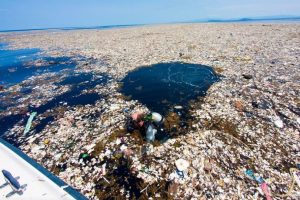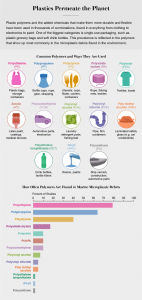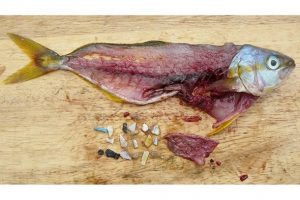
Source: Providence Trade
As detrimental as this photo looks, today’s plastic pollution is unfortunately not limited to these plastic bags and bottles that line the ocean surfaces. Recently, plastic has begun to affect ecosystems and species in ways we did not ever imagine; in the form of microplastics.
What are Microplastics?
Microplastics are small, barely visible pieces of plastic that ultimately enter and pollute our oceans, streams, rivers, soil and air. They can enter our environment from a variety of sources including cosmetics, textiles and industrial settings, or simply from the plastics we pollute each day. According to a recent study done by researchers in Japan, the abundance of microplastics within the world’s oceans has raised growing concerns amongst environmentalists globally due to their detrimental effects on ecosystems and living organisms, including humans. Unfortunately, due to the small size of microplastics, ranging from 5mm to the diameter of a red blood cell, it is difficult to report the exact amount found in our oceans. Researchers estimate that with around 300 million metric tons of plastic produced each year, trillions of degraded plastic bits may be lurking in the environment, largely unseen.

Source: Andrea Thompson via Scientific American
Microplastics in our ecosystem and in our bodies:

Source: Dr. Marcus Eriksen of Gyres Institute
Since microplastics are, as the name suggests, microscopic, they can be ingested by a wide variety of creatures, including plankton (the basis of the marine food chain). Real harm can be done if microplastics in fish and other species move from their gut into the bloodstream and other organs. A study done by Mark Browne shows physical signs of damage, as the particles jabbing and rubbing against organ walls can cause inflammation, while leaching of hazardous chemicals cause liver damage. These hazards can disrupt the immune functions, growth and reproduction of organisms. Even if individual species do not seem to suffer, their ingestion of microplastics can have a ripple effect when they accumulate within a food chain, as another study shows how the fish do not necessarily excrete the microplastics once ingested.

Not only are these microplastics found in wildlife species, according to a recent study, we actually ingest them everyday. In addition to being present in packaged food and bottled water they are found in tap water and even in the air we breathe, making it virtually impossible to avoid them.
According to Browne’s research, the amount of microplastics in lakes and soils alone could rival the more than 15 trillion tons of particles thought to be floating on the ocean surface. Before we can make any progress on curbing this pollution, we must first understand how much is concentrated in which places, where exactly it is coming from, and how it is moving around.
For more information listen to this interview done by Kate Nielson from the National Oceanic and Atmospheric Atmosphere:
Audio clip: Adobe Flash Player (version 9 or above) is required to play this audio clip. Download the latest version here. You also need to have JavaScript enabled in your browser.
